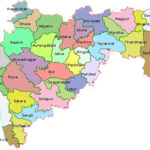India, with its vast agricultural sector, plays a pivotal role in ensuring food security for its massive population and contributing to the national economy. However, the agricultural landscape in India faces numerous challenges due to the diminishing availability of natural resources. This article explores the key issues that Indian agriculture confronts, including water scarcity, soil depletion, deforestation, climate change, and an energy crisis. By delving into these challenges, we can gain a comprehensive understanding of the urgent need for sustainable farming practices and effective policy interventions to safeguard the future of Indian agriculture amidst diminishing natural resources.
Importance of Indian agriculture in the national economy
Indian agriculture is the backbone of the nation’s economy. With a vast population depending on agriculture for their livelihood, it plays a crucial role in reducing poverty and ensuring food security. Not only does it contribute significantly to the GDP, but it also provides employment opportunities to more than half of the Indian workforce.
Overview of natural resources essential for Indian agriculture
For Indian agriculture to thrive, it heavily relies on various natural resources. Water, fertile soil, and biodiversity are the key pillars that sustain agricultural productivity. Unfortunately, these resources are facing rapid depletion and pose significant challenges to the future of Indian agriculture.
Growing water scarcity in India
Water scarcity has emerged as a severe threat to Indian agriculture. With depleting water tables, erratic rainfall patterns, and increasing demand from other sectors, farmers are struggling to secure sufficient water for their crops. The situation is further exacerbated by climate change, which leads to prolonged droughts and water stress in many regions.
Effects of water scarcity on crop yield and quality
The impact of water scarcity on crop yield and quality is dire. Insufficient water availability leads to stunted growth, reduced productivity, and poorer crop quality. Farmers are forced to compromise on the choice of crops, cultivating water-intensive varieties becomes impractical, and the overall agricultural output suffers.
Water conservation techniques for sustainable agriculture
To mitigate water scarcity, sustainable water conservation techniques are crucial. Rainwater harvesting, drip irrigation, and precision farming are some of the practices that promote efficient water usage. Additionally, educating farmers about water-saving strategies and investing in better water management infrastructure can go a long way in ensuring sustainable agriculture.
Soil erosion and its consequences
Soil erosion poses a significant challenge to Indian agriculture. Unsustainable farming practices, deforestation, and improper land management lead to erosion, where fertile topsoil is gradually washed or blown away. This results in reduced soil quality and nutrient depletion, negatively impacting crop growth.
Loss of nutrients and soil fertility
As soil erodes, essential nutrients necessary for plant growth are lost. Continuous cultivation without adequate measures to replenish nutrients further degrades soil fertility. This necessitates the excessive use of chemical fertilizers, which not only increases farming costs but also harms the environment in the long run.
Soil management practices for preserving fertility
To combat soil degradation and maintain agricultural productivity, adopting sustainable soil management practices is crucial. These include contour plowing, terracing, cover cropping, crop rotation, and organic farming methods. Such approaches help prevent soil erosion, retain nutrients, and enhance soil fertility, ultimately ensuring the sustainability of Indian agriculture.
Deforestation and loss of biodiversity: Deforestation trends in India
Deforestation is a pressing concern in India, with forests being cleared for agriculture, urbanization, and industrialization. This rampant destruction of forests has a profound impact on the environment, including the loss of precious biodiversity and disruption of ecological balance.
Impact of deforestation on agricultural ecosystems
Deforestation negatively affects agricultural ecosystems in several ways. It disturbs natural habitats, leading to the decline of pollinators, beneficial insects, and other animals necessary for crop pollination and pest control. Moreover, forests play a vital role in regulating the climate, maintaining water cycles, and preventing soil erosion, all of which directly impact agricultural productivity.
Promoting sustainable land-use practices to conserve biodiversity
To safeguard Indian agriculture and preserve biodiversity, it is essential to promote sustainable land-use practices. This includes reforestation efforts, afforestation, creating protected areas, and promoting agroforestry practices. By incorporating these approaches, we can ensure the conservation of vital ecosystems while maintaining agricultural productivity for future generations of sustainable agriculture for the future
Climate change and its effects on agricultural practices
Climate change is no longer a distant threat, but a pressing reality that is affecting agricultural practices worldwide. In India, changing weather patterns and extreme events are posing significant challenges to the farming community.
Changing weather patterns and extreme events
From erratic rainfall patterns to prolonged droughts and unexpected floods, Indian farmers are facing the brunt of climate change. These changing weather patterns make it difficult for farmers to plan their agricultural activities and can lead to crop failures and financial losses.
Crop adaptation and resilience in the face of climate change
To combat the adverse effects of climate change, there is a need for crop varieties that are more resilient and adaptable. Research and development in crop breeding and genetic engineering can help in creating drought-tolerant, disease-resistant, and heat-resistant crop varieties, ensuring better yields and food security.
Mitigation strategies to reduce agriculture’s contribution to climate change
Agriculture is also a significant contributor to greenhouse gas emissions. Implementing mitigation strategies such as precision farming, organic farming, and agroforestry can help reduce agriculture’s carbon footprint. Additionally, promoting efficient water management practices can help conserve water, a valuable resource that is under threat due to climate change.
Energy crisis and the need for sustainable farming techniques
The energy crisis is another challenge faced by Indian agriculture, and the need for sustainable farming techniques has never been more critical.
Energy consumption in Indian agriculture
Traditional farming practices heavily rely on fossil fuels for irrigation, transportation, and machinery. The rising cost of energy and the environmental impact of fossil fuel usage necessitate a shift towards more energy-efficient alternatives.
Shift towards renewable energy sources
Adopting renewable energy sources such as solar power and biogas can help reduce dependency on fossil fuels. Solar-powered irrigation systems, biofuel production, and waste-to-energy plants are some examples of sustainable energy solutions that can benefit Indian agriculture.
Adoption of sustainable farming practices for energy efficiency
Sustainable farming techniques like organic farming, integrated pest management, and conservation agriculture not only reduce energy consumption but also promote soil health and biodiversity. By minimizing the use of chemical inputs and optimizing resource utilization, farmers can achieve energy efficiency and long-term sustainability.
Policy interventions for addressing challenges faced by Indian agriculture
Addressing the challenges faced by Indian agriculture requires strong policy interventions and government support.
Government initiatives for water resource management
The government should focus on improving water resource management through measures like rainwater harvesting, watershed development, and efficient irrigation techniques. Providing financial incentives and technical assistance to farmers can encourage the adoption of water-saving practices.
Soil conservation policies and programs
Soil erosion and degradation are major threats to agricultural productivity. Implementing soil conservation policies and programs, such as promoting cover cropping, terracing, and agroforestry, can help preserve soil health and fertility in the long run.
Biodiversity conservation policies in agricultural landscapes
Biodiversity loss in agricultural landscapes can have adverse effects on ecosystem services and crop productivity. Protecting and promoting biodiversity through measures like establishing wildlife corridors, conserving natural habitats, and promoting organic farming can contribute to sustainable agriculture.
Conclusion: Strategies for sustainable agriculture in the face of diminishing natural resources
Sustainable agriculture is the key to ensuring food security and environmental sustainability in the face of diminishing natural resources.
Importance of sustainable agriculture for the future
By adopting sustainable farming practices, we can mitigate the impacts of climate change, reduce energy consumption, and protect our natural resources. Sustainable agriculture not only benefits farmers but also contributes to the overall well-being of society.
Collaborative efforts for sustainable agriculture
Addressing the challenges faced by Indian agriculture requires collaborative efforts between the government, farmers, research institutions, and the private sector. Encouraging partnerships, knowledge-sharing, and capacity-building initiatives can accelerate the adoption of sustainable agriculture practices.
The role of technology and innovation in sustainable agriculture
Technology and innovation play a crucial role in enhancing agricultural productivity while minimizing resource use. Embracing advanced agricultural technologies like precision farming, remote sensing, and data analytics can help optimize resource allocation, improve crop yields, and reduce environmental impacts.
In conclusion, as Indian agriculture faces the challenges of climate change, energy crisis, and diminishing natural resources, it is imperative to prioritize sustainable farming techniques, implement supportive policies, and foster collaborative efforts. By doing so, we can ensure a resilient and sustainable agricultural sector that meets the needs of the present without compromising the ability of future generations to meet their own.
Conclusion: Strategies for sustainable agriculture in the face of diminishing natural resources
In conclusion, the challenges faced by Indian agriculture due to diminishing natural resources demand immediate attention and proactive measures. By prioritizing water conservation, implementing soil management techniques, promoting biodiversity conservation, adapting to climate change, and embracing renewable energy sources, India can pave the way towards sustainable agriculture. Furthermore, effective policy interventions, supported by robust research and technological advancements, are crucial for addressing these challenges. With collaborative efforts from farmers, policymakers, and stakeholders, India can ensure the resilience and long-term viability of its agricultural sector, securing food production and the well-being of its growing population.
FAQ
What are the main challenges faced by Indian agriculture due to diminishing natural resources?
Indian agriculture faces various challenges, including water scarcity, soil depletion, deforestation, climate change, and an energy crisis. These challenges directly impact crop yield, agricultural productivity, and the overall sustainability of farming practices.
How does water scarcity affect Indian agriculture?
Water scarcity poses a significant challenge to Indian agriculture as it limits the availability of water for irrigation purposes. This shortage of water affects crop growth and can lead to reduced yield, poor-quality produce, and even crop failure. It necessitates the implementation of water conservation techniques for sustainable farming practices.
What is the impact of deforestation on Indian agriculture?
Deforestation disrupts ecosystems and leads to the loss of biodiversity, which is essential for maintaining a healthy agricultural environment. Deforestation can result in soil erosion, reduced rainfall, and altered weather patterns, negatively impacting agricultural productivity. Conserving biodiversity and promoting sustainable land-use practices are crucial for safeguarding Indian agriculture.
How can policy interventions address the challenges faced by Indian agriculture?
Policies play a vital role in addressing challenges faced by Indian agriculture. Government initiatives focusing on water resource management, soil conservation, biodiversity conservation, and climate change mitigation are essential. These policies need to be supported by research, technological advancements, and collaboration between farmers, policymakers, and stakeholders to ensure sustainable agriculture practices and the preservation of natural resources.












